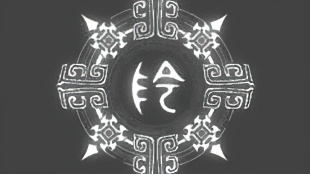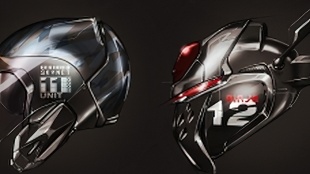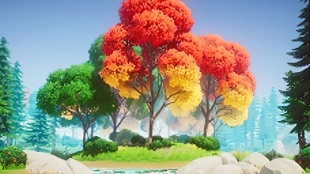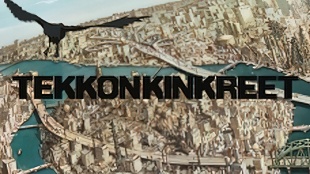您需要 登录 才可以下载或查看,没有账号?注册

x
本帖最后由 秋令6689 于 2022-5-17 15:37 编辑
Valencia Mercat Central Azulejos – Material Breakdown – Massimo Caggese 瓦伦西亚梅尔卡特中央阿祖莱霍斯 – 材料分解 – 马西莫·卡格塞
Introduction Hi everyone! I’m Massimo, working as a Material Artist at in its new office located in Valencia (Spain) after the recent acquisition of elite3d by 2K. Before this, since March 2019 I worked as a Prop/Environment Artist at and took part in AAA projects such as Cyberpunk 2077 and Forza Horizon 5. 介绍 大家好!我是Massimo,在最近被2K收购elite3d之后,在位于瓦伦西亚(西班牙)的新办公室担任材料艺术家。在此之前,自2019年3月以来,我一直担任道具/环境艺术家,并参加了AAA级项目,如《赛博朋克2077》和《极限竞速:地平线5》。 Worth mentioning that, before starting my career in the games industry, I worked for almost 10 years as an archaeologist specialized – ironically – in ancient materials. 值得一提的是,在开始我在游戏行业的职业生涯之前,我作为考古学家工作了近10年 - 具有讽刺意味的是 - 专门研究古代材料。 The Idea This work is part of wider project – started one year and a half ago with my friend and colleague – of creating a small material collection inspired by some of the most iconic and characteristic features of the city of Valencia. The purpose of this whole project was mostly sharpening our skills in Substance Designer, training ourselves in analyzing a material having first-hand references, and lastly paying a small tribute to the beautiful city in which we live in. 理念 这项工作是更广泛项目的一部分 - 一年半前与我的朋友和同事一起开始 - 创建一个小型材料系列,灵感来自瓦伦西亚市的一些最具标志性和特色的特征。整个项目的目的主要是提高我们在物质设计师方面的技能,训练自己分析具有第一手参考资料的材料,最后对我们居住的美丽城市表示小小的敬意。 The Mercat Central Azulejos: A material study Mercat Central Azulejos:一项材料研究 Artstation link: For my second contribution to this project (you can see the first one ) I chose to re-create in Substance Designer the well-known external wall of the Mercat Central – located in the Old City district – characterized by a pattern of ceramic tiles (the ‘azulejos’) with different hand-painted colored decorations (floreal, abstract, heraldic). 对于我对这个项目的第二个贡献(你可以看到第一个),我选择在Substance Designer中重新创建位于旧城区的Mercat Central着名的外墙,其特点是瓷砖图案("azulejos"),带有不同的手绘彩色装饰(弗洛亚尔,抽象,纹章)。 The reason behind this choice was not just the beauty of the material itself, but mostly was the possibility for me to challenge myself and investigate how to achieve a both realistic, good-looking and interesting material without relying on rich height/normal informations, but just pushing as much as possible the color and roughness ones in all their details and variations. Secondly, I was interested in how to create all the hand-painted decorations directly in Substance Designer and later on distribute them inside the tile pattern. 这个选择背后的原因不仅仅是材料本身的美丽,而且主要是我有可能挑战自己,并研究如何在不依赖丰富的高度/正常信息的情况下实现既逼真,好看又有趣的材料,而只是尽可能地推动颜色和粗糙度的所有细节和变化。其次,我对如何直接在 Substance Designer 中创建所有手绘装饰感兴趣,然后将其分布在瓷砖图案中。 Jumping into the analysis of the material, the decoration/color aspect was the one that needed most of the attention: I first identified the common features in the decoration among all the tiles so that they could be later on extrapolated and processed separately from the rest, but also allowing me to treat each tile in the same way. 跳到对材料的分析中,装饰/颜色方面是需要最多关注的方面:我首先确定了所有瓷砖中装饰的共同特征,以便以后可以将它们与其他瓷砖分开推断和处理,但也允许我以相同的方式对待每个瓷砖。 As shown in the picture, the following main elements have been isolated: 1-‘Background’, 2-‘Area’, 3-‘Borders’, 4-‘LightDetails’, 5-‘DarkDetails’. I also added another category called ‘Overpaint’ for both Light/Dark Details to be able to target some specific part to be treated separately (overlapping strokes, different color, directional strokes). 如图所示,以下主要元素已被隔离:1-"背景",2-"区域",3-"边界",4-"光细节",5-"黑暗细节"。我还为浅色/深色细节添加了另一个名为"Overpaint"的类别,以便能够针对要单独处理的某些特定部分(重叠笔触,不同颜色,方向笔触)。 Other extrinsic details – miscolorations, grime, chippings in the glaze and/or ceramic – have been planned to be added later on, after finalizing the main pattern. 其他外在细节 - 颜色错配,污垢,釉料和/或陶瓷中的碎屑 - 计划在最终确定主要图案后添加。 Material Creation Steps The full creation of this material can be resumed in the following steps: 材质创建步骤 可以通过以下步骤恢复此材料的完整创建: Vector Drawing The more obvious decision about how to re-create those intricate decorations was through vector drawing. I rarely used SVG nodes before this project so I wanted to give them a try and keep all the work inside the same software instead of dealing with annoying export-import processes when tweaking the shapes. Having the reference picture as a background, I started tracing the shapes divided by the categories mentioned above: a sub-graph created for each tile decoration will return those as outputs of a custom node. 矢量绘图 关于如何重新创建这些错综复杂的装饰的更明显的决定是通过矢量绘制。在这个项目之前,我很少使用SVG节点,所以我想尝试一下,把所有工作都保留在同一个软件中,而不是在调整形状时处理烦人的导出导入过程。以参考图片为背景,我开始跟踪除以上述类别的形状:为每个磁贴装饰创建的子图形将返回这些形状作为自定义节点的输出。 Filters creation After the first step, I started creating another sub-graph – probably the most important part of this whole work – meant to be a custom filter node, through which process each element drawn in the previous phase, but also useful as a good start for the non-decorated tiles. The exposed parameters set for this node (denominated ‘Ceramic filter’) control several aspects that contribute to achieve a nice ceramic, hand-painted effect (color variations, impurities, grainy effect, brush strokes intensity and directionality). Plugging any shape information, like the ones inside each decoration, the filter adds gradient effects and borders to the final color result and returns also a mask output to be used in the next step. 过滤器创建 在第一步之后,我开始创建另一个子图-可能是整个工作中最重要的部分-意味着一个自定义过滤器节点,通过该节点处理在上一阶段绘制的每个元素,但也可以作为未装饰瓷砖的良好开端。为此节点设置的公开参数(以"陶瓷滤镜"命名)控制有助于实现良好陶瓷手绘效果的几个方面(颜色变化、杂质、颗粒效果、画笔笔触强度和方向性)。通过插入任何形状信息(如每个修饰内的信息),滤镜会向最终颜色结果添加渐变效果和边框,并返回要在下一步中使用的蒙版输出。 A second sub-graph (denominated ‘Azulejo effect’) has been created to receive all the decorations data coming as inputs, processing them through individual ceramic filters with different parameter settings, blend them together with a background and, when needed, with an overlay element (some of the tiles have a white/blue band on the top or bottom part). All the color variations are linked through HSV nodes to a single exposed color value that can also be replaced by an external color input to help keeping the same values among different tiles. The rest of the parameters for this node control the aspects already mentioned above, this time grouped for light/dark/overpaint details. 已经创建了第二个子图(称为"Azulejo效应")来接收作为输入的所有装饰数据,通过具有不同参数设置的单个陶瓷过滤器处理它们,将它们与背景混合在一起,并在需要时使用叠加元素(一些瓷砖的顶部或底部有白色/蓝色条带)。所有颜色变体都通过 HSV 节点链接到单个公开的颜色值,该值也可以替换为外部颜色输入,以帮助在不同磁贴之间保持相同的值。此节点的其余参数控制上面已经提到的方面,这次针对浅色/深色/过度绘画细节进行了分组。 The last thing worth mentioning about the utility of keeping all these operations inside custom nodes regards not only how fast is tweaking the exposed parameters, but also how easy is to create different variations just changing the random seed value. 关于将所有这些操作保存在自定义节点中的实用性,值得一提的最后一件事不仅涉及调整公开参数的速度有多快,还涉及仅更改随机种子值即可创建不同变体的难易程度。 Shapes distribution Having the base tiles’ color done, I needed to find a way to distribute them – and their related variations – across the pattern. 形状分布 完成基础图块的颜色后,我需要找到一种方法来在整个图案中分布它们及其相关的变体。 The best way I found was dividing the tiles into thematic groups and processing them through different ShapeSplatter nodes (having just a white square as input shape) controlled by individual distribution/rotation/mask maps. This way I had just to transfer their splatter data to as many ShapeSplatterBlendColor nodes that would distribute the colored tiles as desired. 我发现的最好方法是将磁贴划分为主题组,并通过不同的ShapeSplatter节点(只有一个白色方块作为输入形状)进行处理,这些节点由单独的分布/旋转/遮罩贴图控制。通过这种方式,我只需要将他们的飞溅数据传输到尽可能多的ShapeSplatterBlendColor节点,这些节点将根据需要分发彩色瓷砖。 Height The height pass was quite straight-forward to work on since, as we said at the very beginning, this material is characterized by very few and weak details compared to the color ones. 高度 高度传递非常直接,因为正如我们在一开始所说,与彩色材料相比,这种材料的特点是细节很少且薄弱。 Starting from the grayscale pattern originated by the ShapeSplatter nodes I could easily EdgeDetect it and work on the tiles shape and profile. After that, were added a very subtle general surface noise and an even more subtle bump along the decorations borders that can be both appreciated only with a grazing lighting. 从 ShapeSplatter 节点产生的灰度模式开始,我可以轻松地在 EdgeDet 上检测到它,并在磁贴形状和轮廓上工作。之后,增加了一个非常微妙的一般表面噪音和沿着装饰边界的更微妙的颠簸,这只能通过放牧照明来欣赏。 Chippings in the ceramic and in the glaze have been added through two different interations of SlopeBlur nodes and distributed along the pattern through an HistogramSelect node, so to affect just some tiles more concentrated in the bottom part (where it’s more likely they have been damaged). 陶瓷和釉料中的碎屑是通过SlopeBlur节点的两个不同相互作用添加的,并通过直方图选择节点沿着图案分布,因此只影响一些更集中在底部的瓷砖(在那里它们更有可能被损坏)。 Lastly, through an HeightBlend node I added a layer of grout in the interstices between the tiles, later tweaked to add further surface details and get a non-uniform distribution (probably I could have worked a bit more on that because I’m not 100% satisfied…but hey, the protagonists are the tiles!). 最后,通过 HeightBlend 节点,我在瓷砖之间的间隙中添加了一层灌浆,后来进行了调整以添加更多表面细节并获得不均匀分布(也许我本可以在这方面做更多的工作,因为我不是100%满意......但是,嘿,主角是瓷砖! Base Color Having already all the colored tiles done and in position, a second color pass was needed just to add some more variety in terms of miscolorations between the tiles, on their surface and along their borders. Then, using the height information for the chippings as a mask, I assigned a very basic color for the ceramic underneath the glaze and I did the same for the grout. 基色 在完成所有彩色瓷砖并就位后,需要第二次颜色传递,只是为了在瓷砖之间,表面和边界上的错色方面增加更多的多样性。然后,使用碎屑的高度信息作为掩模,我为釉面下的陶瓷分配了一个非常基本的颜色,我对灌浆做了同样的事情。 Last step was creating a couple of masks for dirt and grime – in shape of dark leakings and spots – running along the whole surface to have a better blending between all the individual elements. 最后一步是为污垢和污垢创建几个口罩 - 深色泄漏和斑点的形状 - 沿着整个表面运行,以便在所有单个元素之间更好地融合。 Roughness The roughness pass have been another important phase to achieve a realistic and interesting look for this material. Already with my mind projected to the presentation/rendering phase, I knew I had to emphasize this aspect to get interesting and vibrant play of reflecions and make less boring as possible a surface otherwise flat. 粗糙度 粗糙度通过是实现这种材料逼真而有趣的外观的另一个重要阶段。我已经把心思投射到演示/渲染阶段,我知道我必须强调这一方面,以获得有趣和充满活力的折射,并使表面尽可能不那么无聊,否则平坦。 Having already available all the masks created in the height and color steps, I just had to blend them and assign proper roughness values to achieve a sharp but still homogenous final result. 由于已经可以使用在高度和颜色步骤中创建的所有蒙版,我只需要混合它们并分配适当的粗糙度值即可获得清晰但仍然均匀的最终结果。 Presentation Presentation and renderings have been done entirely in Marmoset Toolbag 4 with a quite simple setup, trying to resemble the outdoor atmosphere similar to the one where the original tiles are located: both hdri and directional lights have been placed in a way to highlight the material’s features and its responsiveness to light. 介绍 演示和渲染完全在Marmoset Toolbag 4中完成,设置非常简单,试图类似于原始瓷砖所在的户外氛围:hdri和定向灯都以突出材料特征及其对光线的响应性的方式放置。 Lastly, for the frontal beauty shots and the close-ups renders I quicky modeled a stone trim and placed it at the top and at the bottom, so to place the material in a more contextualized, less abstract, scene. I also added a fence and some human figures to be placed outside of the camera just to project some soft shadows on the vertical surface. 最后,对于正面美颜镜头和特写渲染,我快速建模了一个石头装饰,并将其放置在顶部和底部,以便将材料放置在更符合上下文,不那么抽象的场景中。我还添加了一个围栏和一些人物,放置在相机外面,只是为了在垂直表面上投射一些柔和的阴影。 Conclusions Drawing some conclusion for this work, I can say I’m pretty satisfied not just for reaching a nice final result but also for having sharpened a bit more my skills in this amazing software. 结论 为这项工作得出一些结论,我可以说我非常满意,不仅达到了一个不错的最终结果,而且还在这个惊人的软件中提高了我的技能。 If I should give some advice to other artists out there approaching for the first times to Substance Designer, I would always recommend, on the planning side, to start with mentally dividing the one big picture into many smaller issues to be solved individually one by one. On the artistical side, I suggest– even when working with very good references – to always start studying a material and its components also for their real physical/chemical/mechanical characteristics, how they interact between each other and how they behave due to any external factors. In this way we will have a better understanding and awareness of what’s going on and we will also be able to create new materials from scratch more easily. 如果我应该给其他第一次接近Substance Designer的艺术家一些建议,我总是建议,在规划方面,从精神上将一幅大图景分成许多小问题开始,逐一解决。在艺术方面,我建议 - 即使使用非常好的参考资料 - 也要始终开始研究材料及其组件,以及它们的真实物理/化学/机械特性,它们如何相互作用以及它们由于任何外部因素而表现如何。通过这种方式,我们将更好地了解和意识到正在发生的事情,我们也将能够更轻松地从头开始创建新材料。
| 
 显示全部 8
显示全部 8














